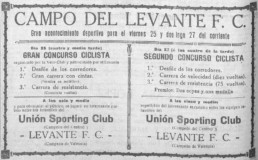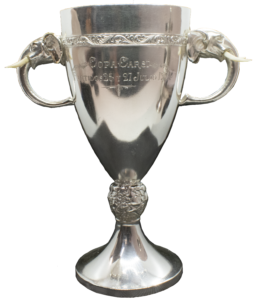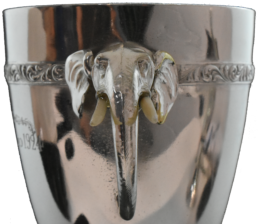It is clear that if there is a Levante title known to the general public, it is the Copa España Libre of 1937. And not only is the history of that championship popular, but also many people know what the trophy looks like physically.
Although in the trophy cabinets of a club with more than one hundred and eleven years of history there are memories of many other achievements which, obviously, have not had the same resonance and which, nevertheless, also hide formidable stories. In the one we dust off today, we will discover the history of the Carsí Cup and the extraordinary singularity that makes it unique.
The Carsí Cup after its restoration in 2020
The Carsí Cup dates back to July 1924. More than ninety-six years look back on it. And we speak in the present tense because we are lucky enough to keep it among our most precious objects just as it is about to become a hundred years old. What’s more, recently ‘Piró Orfebres’ has given it a facelift that has left it looking fantastic. And it has because the Orriols club is clearly determined to give value to a whole series of objects (trophies, kits, pennants, publications, photographs, passes, contracts of historic players, etc.) that make up our idiosyncrasy and that we want to preserve properly through the necessary restorations. The future great museum of Levante U.D., which will not take long to open its doors, will collect all this material for the enjoyment of the visitor.
But back to the Carsi Cup and the great peculiarity of this trophy that makes it unique… Has anyone ever seen two African elephants play a football match? Clearly no one, it was an amusing rhetorical question. Although, well, you never know what would happen if a ball were dropped between the legs of a herd of these highly intelligent animals… And has anyone ever seen a cup won by a football team where the handles of the trophy are two beautiful elephant heads (with their corresponding ivory tusks) and their trunks form the circles that close them?
I’m sure that very few people do. That is why this peculiarity gives this Carsí Cup an indisputable originality. And it is clear that such an exceptional object could only end up in the hands of a champion that also achieved excellence: El Invencible, a team that was the pride of Levantinism in the early twenties of the last century. But we will leave the story of this fabulous team for future updates of this website.
Detail of one of the handles, in the shape of a pachyderm.
Let’s see what the inscription on the trophy says: “Carsí Cup – Matches 25 and 27 July 1924”. So… What or who was Carsí and what was the story of those two matches?
Carsí was not a place or the name of a tournament, he was a person, a pro Levantinista, one of those who have been so “since before they were born”. Enrique Carsí has always been linked to the Poblados Marítimos club. In fact, he was a member of several boards of directors (in a news item in EL PUEBLO of 5 August 1924 he appears as treasurer). But apart from his passion for Levante, he never hid his love of cycling. And in a philanthropic way he sponsored various sporting events where he always tried to combine his two weaknesses. The Camino Hondo course was set up as the setting for the sport of two wheels. On 4 June 1924, the newspaper EL PUEBLO congratulated him as the donor of the cup won by the winner of the cycling race held the previous Sunday.
Given the success of that event, Enrique Carsí decided to organise another much better one for the following month. And it was better because this time the public would be able to enjoy both football and cycling. The dates chosen were Friday 25th and Sunday 27th July. And all under the umbrella of the July Fair, the great summer festival that the city of Valencia always celebrates at this time of year.
The two days were to start with a great cycling competition, organised by the Velo-Club and sponsored by Levante, with prizes in metal, cups and medals. And on both days, these cycling competitions were to be followed by two spectacular football matches between the Levante children’s team (Valencia champions) and the Unión Sporting Club (Madrid champions). That Levante was none other than the mythical eleven of El Invencible, the team that everyone wanted to beat but nobody could beat. And the winner (overall) of that double clash would take home the precious Carsí Cup, which was already awaiting its owner.

Advertisement published in the newspaper El Pueblo 24th July 1924
An owner who, in the end, left no doubt that he was the deserved winner of the tournament. El Invencible overcame the Madrid champions in both matches: 6-1 in the first and 4-1 in the second. And this competition also marked the consecration of a player who was to mark an epoch in Levante: Francisco Puig (Puig II), scorer of two of the four goals in the second match, the last of which was extraordinarily beautiful. Thirteen years later, Puig II would also form part of the legendary team that won our great title in Barcelona: the 1937 Copa España Libre.

